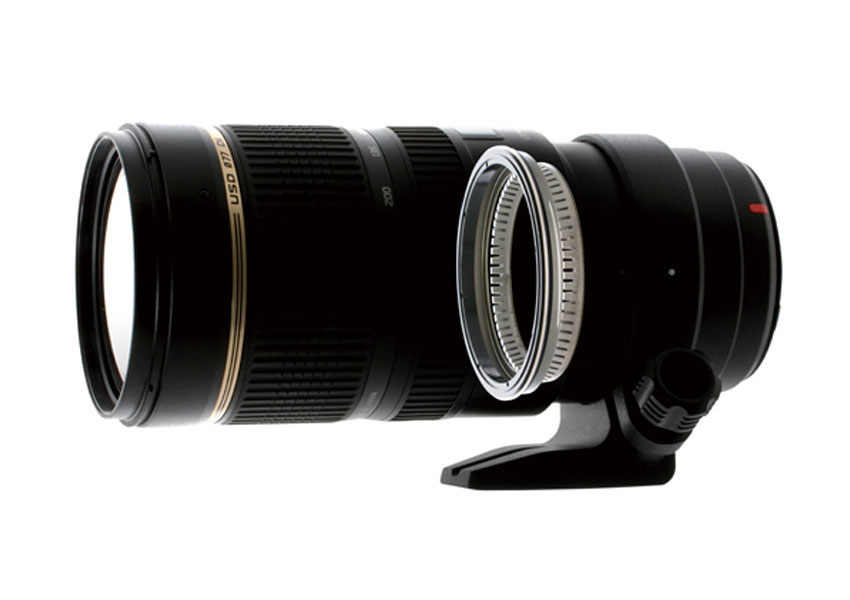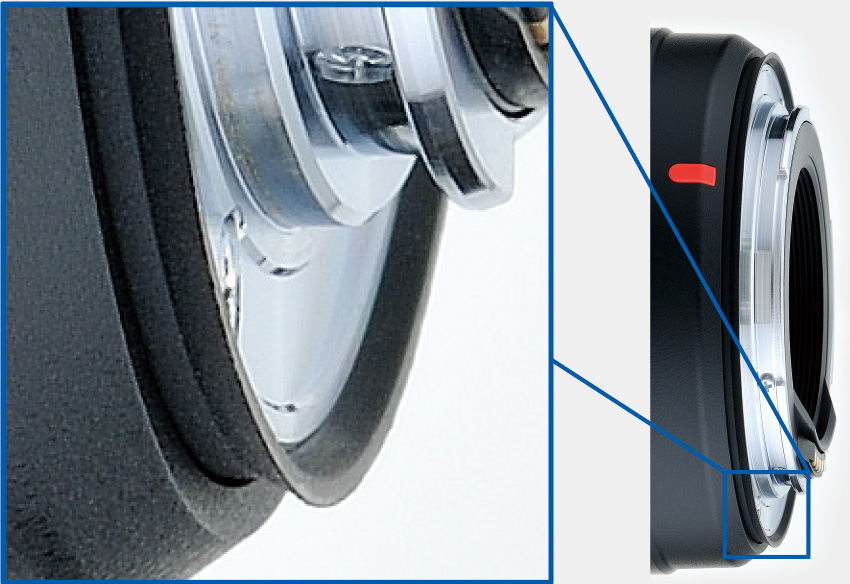Tamron SP 70-200mm F/2.8 Di VC USD (Nikon F)
Free Delivery
Free delivery on orders over R600 within Pretoria
The apex of telephoto lenses in a compact package. "SP 70-200mm F/2.8 Di VC USD"*1 with VC (Vibration Compensation) image stabilization delivers leading-edge image quality in a body that's smallest*2 in its class. Equipped with Tamron's proprietary USD (Ultrasonic Silent Drive) motor, this lens boasts a speedy autofocus so that you can capture that one decisive moment. For sports, journalism, fashion, weddings, or even landscapes, the 70-200mm will exceed your expectations every time.
*1 The Sony mount does not include VC, as Sony digital SLR bodies include image stabilization functionality.
The Sony lens is designated as "SP 70-200mm F/2.8 Di USD".
*2 For high-speed telephoto zoom lenses for full-size SLR cameras, equipped with VC image stabilization and USD. Current as of November 6, 2012. (Source: Tamron)
This high-speed F/2.8 telephoto zoom lens is equipped with the VC mechanism that delivers sharp and vivid viewfinder images. Even in low-light situations, VC reduces camera shake to deliver sharp images.
Tamron's VC is a three-coil system, whereby three driving coils activate the shake-compensating VC lens group electromagnetically via three ceramic balls. The VC lens elements are held in place only by contact with the ceramic balls, achieving smooth movement with little friction. This provides a stable viewfinder image with excellent tracking performance.
Tamron's original VC image stabilization mechanism utilized a moving magnet system whereby a heavy magnet was positioned near the moving VC lens element. In the new VC unit the positions of the magnet and the coil are reversed, because of this the VC optical lens element is attached to the coil. The new VC mechanism employs a moving coil mechanism with a lightweight coil, and the lighter coil reduces the load on the drive system. Thus, the lighter, more compact new VC unit contributes to the lens's overall light weight and compact size.
In the ultrasonic motor, a piezoelectric element arranged in a ring formation generates ultrasonic vibrations in a metallic ring stator, and the vibration energy is used to rotate a metallic ring rotor that is attached to the stator. The rotation energy is in turn transferred from the metallic ring rotor to operate the focus lens. The result is a lens featuring low noise and high-torque, highly responsive, speedy focusing.
The most compact*1 lens body in its class, and it's equipped with Tamron's USD (Ultrasonic Silent Drive) motor and VC (Vibration Compensation) image stabilization to reduce camera shake so that you can achieve the previously unobtainable.
*1 For high-speed telephoto zoom lenses for full-size SLR cameras, equipped with VC image stabilization and USD. Current as of November 6, 2012. (Source: Tamron)
Moisture-resistant construction helps prevent moisture from penetrating the lens.
Using a rounded diaphragm*2, this lens achieves spectacular blur effects. By distinctively blurring backgrounds and foregrounds this high-speed lens creates images that bring your subject into focus, thus to life.
*2 This rounded diaphragm retains a nearly circular shape even when taken two stops down from its fully open state.
With one special XLD (Extra Low Dispersion) glass*3 and four LD (Low Dispersion) elements, this lens offers a new level of correction for chromatic aberrations. The new advanced optical design delivers higher performance with excellent contrast and resolution.
*3 The XLD glass has much lower dispersion, similar to fluorite, than the conventional LD element.
All Tamron lenses have high autofocus precision and are designed to capture subjects easily in almost any situation, yet sometimes a photographer wants to fine tune and make adjustments on the fly. The integration of full time manual focus offers just that: instead of fumbling with switches, photographers can switch from autofocus to manual focus by simply adjusting the focus ring. This feature helps the lens produce impressive results even in telephoto situations where the depth of field is narrow.
| Angle of View (diagonal) | 34゜21' - 12゜21' (with full-size SLR cameras) 22゜33' - 7゜59' (with APS-C sized sensor digital SLR cameras) |
|---|---|
| Optical Construction | 23 elements in 17 groups |
| Minimum Object Distance | 1.3m (51.2 in) |
| Maximum Magnification Ratio | 1:8 (at f=200mm : MFD 1.3m) |
| Filter Size | Φ77mm |
| Maximum Diameter | Φ85.8mm |
| Length*1 | 188.3mm (7.4 in)* |
| Full Length*2 | 196.7mm (7.7 in)* |
| Weight | 1,470g (51.9 oz)* (including detachable tripod mount) |
| Aperture Blades | 9 (rounded diaphragm)*3 |
| Minimum Aperture | F32 |
| Standard Accessory | Flower-shaped lens hood |
| Mount |
NIKON F Mount |










